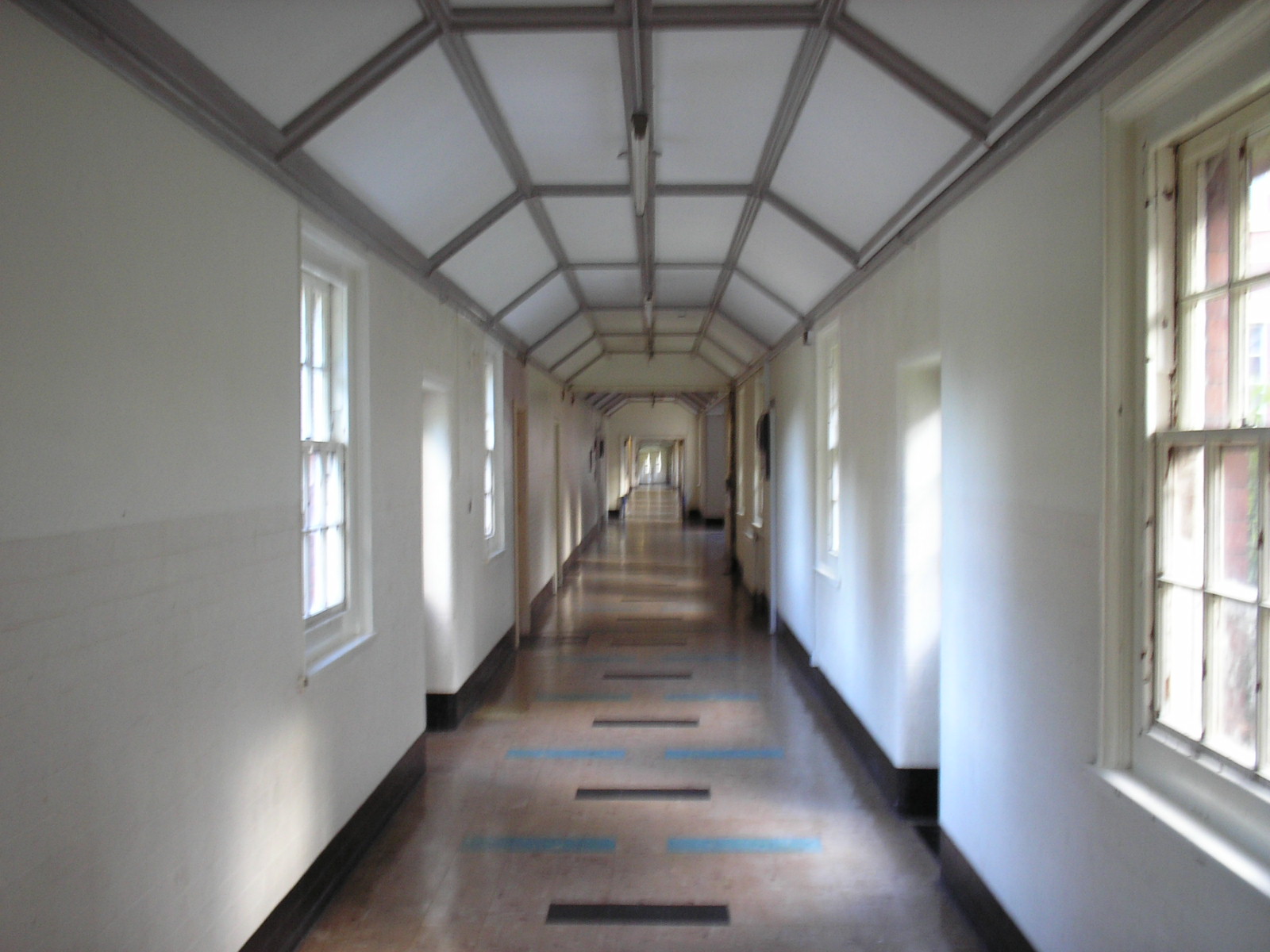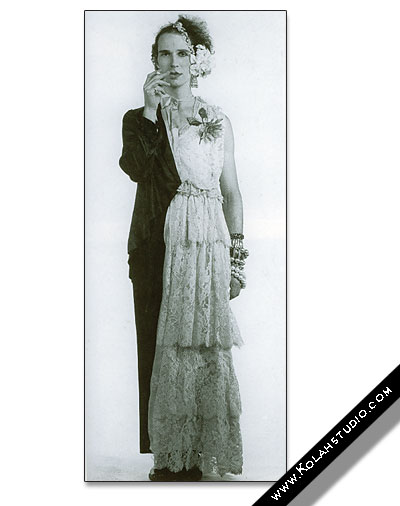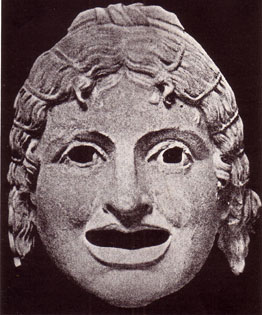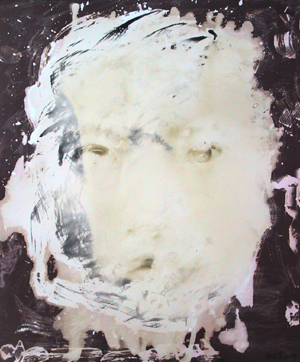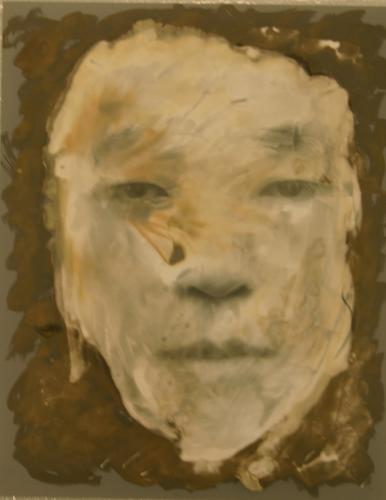Monday, 9 May 2011
Scottish National Gallery of Modern Art

I thought that I could use gallery 7,8 and 9.
Build my own corridor that will display all of my masks.
I want to make 500 white masks of my own, using casts of my face then have another 500 that I have sent out to people to make and send back to me. Thats my final idea explained simply but in my proposal I will go into a lot more detail.
Sunday, 8 May 2011
Jan Kopper
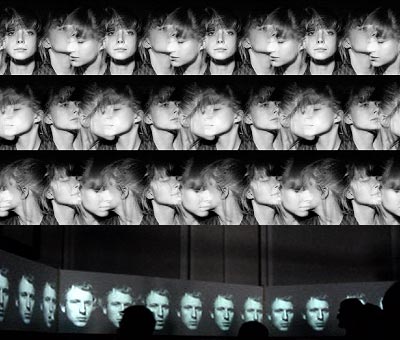
REPETITION
An investigation into the everyday process of repetition, through the use of a specific installation system which combines video loops and multiple projections to explore our understanding of temporal and spatial repetition.
The work is the result of an intense study into the subconscious process of repetition; an influencing force upon the very structure of our society, which western culture responds to with a never-ending quest for originality. The video installations feature fragmentary body movements which attract the attention of the viewer through their temporal hypnotic rhythm and spatial displacement. They make us question the autonomous nature and routine of our daily lives. Do we act involuntarily in a process of never-ending repetition or are we self-determined and able to create something new?
Wednesday, 4 May 2011
Tuesday, 26 April 2011
Monday, 18 April 2011
Ron Mueck
Came across Ron Mueck whilst researching! His work is truly amazing, really want to see one of his exhibitions!
Library
I've just visited the library again and found loads of books. Books on the Gods of Ancient Egypt, Pyramids and Tombs, Celtic Mysteries, Indian Mythology, Irish Medieval Sculpture, The Tibetan Book of The Dead and Masks of the Spirit.
There have been so many images that I've been attracted too and I've found it difficult trying to follow one defined route. However I did come across one painting by Rufino Tamayo and I think its been a major turning point for me. I am now really intrigued by the idea of a mask.
Mask to cover our identity
Death mask
Mask to make us younger to prolong our life
Mask of your past
We carry a mask of our parents
We are carrying a mask of death
A mask of fear
A mask of the unknown
I need to start actually making now. I'm not sure what but I really think theres a lot in this area that relates to my subject.
There have been so many images that I've been attracted too and I've found it difficult trying to follow one defined route. However I did come across one painting by Rufino Tamayo and I think its been a major turning point for me. I am now really intrigued by the idea of a mask.
Mask to cover our identity
Death mask
Mask to make us younger to prolong our life
Mask of your past
We carry a mask of our parents
We are carrying a mask of death
A mask of fear
A mask of the unknown
I need to start actually making now. I'm not sure what but I really think theres a lot in this area that relates to my subject.
Hindu Mythology
Incarnations
Several gods are believed to have had incarnations (Avatars). As the protector of life, one of the duties of Vishnu is to appear on the earth whenever a firm hand is required to set things right. The epic Bhagavatha Purana is the chronology of Vishnu's ten major incarnations (there are in total twenty six incarnations): Matsya (fish), Kurma (turtle), Varaha (boar), Narasimha (lion-faced human), Vamana (an ascetic in the form of a midget), Parasurama (a militant Brahmin), Rama, Krishna, Gautam Buddha(later buddhists separated themselves from Hindus), Kalki (a predicted warrior on a white horse who would come in this yuga ) whose appearance also signals the beginning of the end of the epoch.
Friday, 15 April 2011
Bali Hinduism
Balinese Hinduism is widely divergent from the Indian Hindu orthodoxy. As such, most practices of the Indian Hindu "mainstream" are ignored and abandoned, especially regarding the use of butter. Balinese Hindu dead are generally buried for a period of time, which may exceed one month or more, so that the cremation ceremony (Ngaben) can occur on an auspicious day in the Balinese-Javanese Calendar system ("Saka"). Additionally, if the departed was a court servant, member of the court or minor noble, the cremation can be postponed up to several years to coincide with the cremation of their Prince. Balinese funerals are very expensive and the body may be interred until the family can afford it or until there is a group funeral planned by the village or family when costs will be less. The purpose of burying the corpse is for the decay process to consume the fluids of the corpse, which allows for an easier, more rapid and more complete cremation.
Indian Burial
The Indian religions, such as Hinduism, Jainism, Sikhism and Buddhism, mandate cremation. In these religions, the body is seen as an instrument to carry the soul. As an example, the Bhagavad Gita. According to Hindu philosophy the human body is a combination of five basic natural elements; namely agni (fire), jala (water), vayu (air), prithvi (earth) and akasha (space/ether). When one dies, fire (agni tattva) ceases, and that living form is sent to its original state of creation. Fire (in the form of cremation) is used to complete the fifth element.
According to Hindu traditions, the reasons for preferring to destroy the corpse by fire, over burying it into ground, is to induce a feeling of detachment into the freshly disembodied spirit, which will be helpful to encourage it into passing to "the other world" (the ultimate destination of the dead). Hindus have 16 rituals (Sanskars); i.e. A Hindu undergoes 16 rituals during his lifetime, like Naming ceremony, Thread ceremony: beginning of student life, Marriage, etc., and the last being cremation. Cremation is referred to as antim-samskara, literally meaning "the last rites." At the time of the cremation or "last rites," a "Puja" (ritual worship) is performed. Hindus believe that the cremation ceremony is not just a disposal of the dead body, but the union of Atma (Soul) with the Paramatma (The universal spirit). The holy text of Rigveda, one of the oldest Hindu scriptures, has many Ruchas (small poems) related to cremation, which state that Lord Agni (God of Fire) will purify the dead body, also known as the Parthiv. Therefore, the Parthiv is given over to him.
My friend went to India to live for a quite a while and she explained how in some parts of India you would be walking down the main street and you would see a body burning at the side of the road. I found this horrifying but once you begin to learn why and the strong beliefs they have you begin to understand the ritual.
Celtic Paganism
A reconstructed Celtic burial mound located near Hochdorf in Germany. Such burials were reserved for the influential and wealthy in Celtic society.
Celtic burial practices, which included burying food, weapons, and ornaments with the dead, suggest a belief in life after death.
The druids, the Celtic learned class which included members of the clergy, were said by Caesar to have believed in reincarnation and transmigration of the soul along with astronomy and the nature and power of the gods.
A common factor in later mythologies from Christianised Celtic nations was the otherworld.This was the realm of the fairy folk and other supernatural beings, who would entice humans into their realm. Sometimes this otherworld was claimed to exist underground, whilst at other times it was said to lie far to the west. Several scholars have suggested that the otherworld was the pagan Celtic afterlife, though there is no direct evidence to prove this.
Subscribe to:
Comments (Atom)




